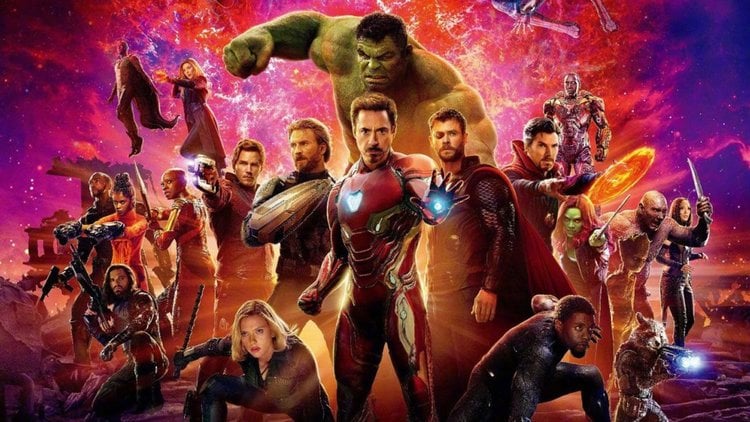
Later this week, ‘Ant-Man and the Wasp‘ will arrive in theaters, marking the third Marvel release of 2018 (in fact, the third since February). This is the second consecutive year in which the studio has managed to get three films into theaters, and they aim to do it again next year, for a hat trick of hat tricks, if you will. That’s a lot of movies by any metric, and it seems like even more given the discussions that arose in the wake of ‘Solo: A Star Wars Story’ of whether or not two ‘Star Wars’ movies in five months was too many.
So how is it that Marvel settled in on three films a year? How did they determine that was a sustainable number? Why not two or four? Well, if you’re one of the countless people who saw ‘Avengers: Infinity War’, you’ve probably noticed that Marvel has bought a lot of their characters to the screen over the last ten years. And while speaking with CinemaBlend during the press tour for ‘Ant-Man and the Wasp’, Marvel Studios President Kevin Feige explained that the sheer breadth of characters at Marvel’s disposal is part of the reason they’ve settled on a three film per year model:
“It’s one of the reasons we’ve expanded to three films a year, is so that we could do the sequels to films that people have responded to – because we love to make continuing stories with characters people have responded to – but also keep doing the stuff that nobody has ever heard of, and people go, “Why are you doing that?” That’s fun. And that’s what Phase One was built on, Phase Two was built on, Phase Three was built on, is having that… Whenever we announce the next year, two years, three years, five years, whatever we’re going to announce, there will be plenty of those that, maybe people in the know like yourself will know what they are, but the world at large will go, “What is it? Why are they doing that?” That’s exciting, for sure.”
In other words, it’s fundamentally a balancing act, with three films a year allowing Marvel to effectively balance sequels like ‘Captain America: The Winter Soldier’ with more out of the box, experimental efforts like ‘Guardians of the Galaxy’ (both of which hit in 2014).
It’s also a matter of balancing a character’s appearances in other films with their one solo stories, with Feige noting that they are effectively juggling “six, seven separate franchises” as part of the large Marvel mega-franchise:
“Sometimes it’s where do these characters pop up? [Doctor] Strange, you know, whenever we do another ‘Strange’ one, which we will do, it will be a number of years from the first ‘Strange’, and yet he’s a very big part of ‘Infinity War’. So it is just a good problem to have when you have so many beloved characters that people want to see more of, whilst keeping to our core belief that we need to keep exploring nuance and keep doing different types of things.”
In the case of the Sorcerer Supreme, ‘Doctor Strange’ was released in 2016. Based on what little hard information we have about Marvel’s post-‘Avengers 4‘ release slate, it’s likely that we’ll be waiting until at least 2020 to see ‘Doctor Strange 2‘. So that’s a four year gap. But in that time, the character will have made a cameo appearance in ‘Thor: Ragnarok’ and played a major role in ‘Avengers: Infinity War’ in addition to likely appearing in some capacity in ‘Avengers 4’. So despite the gap between films, Strange will have been a fairly consistent presence in the Marvel Universe in the interim.
Be sure to check back with ScienceFiction.com for more on future Marvel projects, including ‘Ant-Man and the Wasp’ and ‘Avengers 4’, as it becomes available!
